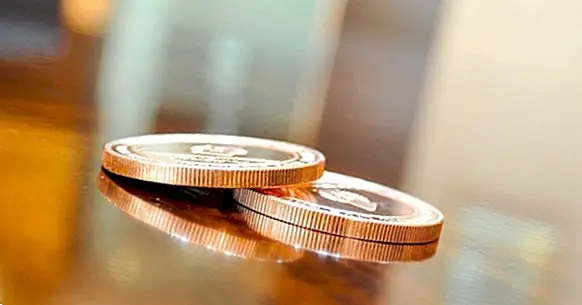Chip economy: how is it used to motivate changes?
Acquire habits, eliminate certain behaviors or generate changes in the way you act ... Sometimes modifying one's own behavior or that of others can be complicated , especially in boys and girls.
Fortunately psychology and other disciplines have worked from different technical theoretical currents that allow people to introduce changes in their way of behaving. One of the techniques used for this purpose is the economy of chips .
- Related article: "The 8 reasons for not using corporal punishment towards children"
Chip economy: A method of behavior modification
Token economy is one of the behavior modification techniques, which are intended to produce a change in the behavior of the subject to be treated or to implement or vanish specific behaviors. These types of techniques are based on the belief that behavior can be modified by learning new actions, and They are widely used to educate or intervene in disorders .
The technique of chip economy is based on the concept of the reinforcement proper to the operant conditioning of B. F. Skinner. This theory indicates that the act of issuing a behavior or not depends on the consequences of that action that are perceived . If these are positive, we tend to repeat the behavior in anticipation of more reinforcement, while if they are negative we will decrease their frequency or eliminate the behavior of our repertoire.
- Maybe you're interested: "The theory of B. F. Skinner and behaviorism"
How is it used?
The procedure to be used in this technique is based on the exchange. The emission of objective behavior will be rewarded with a generalized reinforcer in the form of chips , which can later be exchanged by reinforcers desirable to the subject. The performance of the behavior is controlled through some type of registration system. The chips themselves are a neutral stimulus, with no value for the subject until they know their link with obtaining reinforcers.
Keep in mind that this technique is very useful to modify behaviors already present in the subject's repertoire, implement new behaviors or fade behaviors through the reward of incompatible actions , or by withdrawing files previously submitted.
However, the economy of chips is only useful if we want to introduce changes in a few specific behaviors, or otherwise the changes are made very gradually and negotiating in advance with the child or girl the progress that should be made. doing.
Phases of the procedure
Chip economics is a technique that is easy to apply, but that It requires following a series of stages to be applied correctly. Specifically we can find three differentiated phases, although sometimes they are considered reducible to a phase of implementation of the program and another of fading it.
1. Program establishment phase
The first step to be able to apply this technique is to explain and establish together with the individual to treat the procedure that is going to be carried out.
For this technique to be effective the subject must be able to understand the concept of record, and what is . The cards to be used are shown and the person is helped to understand that these elements are going to be used as interchangeable objects by certain reinforcers.
Thus, we return the tab something desirable by itself and awaken the desire to obtain it. If necessary, it can be exemplified by giving the individual files so that they can be exchanged for an element that can be effective as a reinforcer, showing the basic functioning and meaning of these interchangeable symbols. This procedure could be considered as a subphase, sampling the card as a reinforcer.
Subsequently the subject is indicated that he will obtain a certain amount of cards for each time he carries out a behavior, or if during a certain period of time he has made or avoided a specific behavior.
It is also specified if there is any type of cost to do the opposite of what was intended. In addition, reinforcers are agreed to obtain with the chips and the value of each one is established, conditioning their obtaining to the realization or non-performance of certain behaviors.
Finally, a system is established and developed with which to record the actions of the person over time.
2. Start-up of the program
Once established what is going to be done, it is time to put it into practice. The performance of the child, girl, student or patient is monitored , granting tokens (or removing them in the case of prohibited conduct, depending on whether the response cost is applied or not) as the behavior is recorded.
It is recommended that at least at the beginning, each behavior issued immediately be rewarded, so that the operation of the system is fixed, although over time the rewards will be postponed. It is also recommended that only a few of the possible reinforcers be available, so that the desire of those not yet available allows the behavior to be maintained over time.
3. Completion phase
In the last phase, which will close the program, is going to proceed to do a "dismantling" of the system of chip economy until its completion.
As the subject increases the mastery and practice in the objective behavior, little by little it will begin to increase the number of chips required to achieve the reinforcers, while reducing the chips earned for each conduct performed, harden the requirements to obtain the cards and / or increase the period that take to be delivered.
Over time, the program itself ceases to apply, the subject having already established the behavior. But nevertheless, the changes must be informed to the individual , so that there is no rejection and a reaction to eliminate the desired behavior or recrudescence that was intended to decrease.
Areas of application
The technique of chip economics It can be used both individually and collectively , but it will always be necessary to adjust and agree on the behaviors to be carried out as well as the reinforcers that can be achieved according to the needs of the individuals or group. It can be used to level and standardize a given environment, allowing its reorganization.
The chip economy has a large number of application scopes. Initially it was used to motivate patients with mental disorders to act in a more competent and adaptive way. In the clinical setting, then, it can be used to teach patients with disorders to combat their symptoms through behavioral change.
It can also serve in the educational field, where it is in fact frequently used, especially in elementary schools, or directly in homes as a tool to educate sons and daughters. Used in schools, it allows them to strive to act in a way that they get the reinforcer, helping to improve behavior . But it is not only applied at school or at the clinic, but it can also be used at a particular level to change habits.
Bibliographic references:
- Almond, M.T. (2012). Psychotherapies CEDE Preparation Manual PIR, 06. CEDE: Madrid.
- Jurado López, R.L (2009). Techniques for the reduction and / or restoration of behaviors. Innovation and educational experiences.
- Oblitas, L.A. (2004). "How to do successful psychotherapy?" The 22 most important approaches in contemporary and cutting-edge psychotherapeutic practice. PSICOM Publishers. Bogotá D.C. Colombia. P. 146.



















